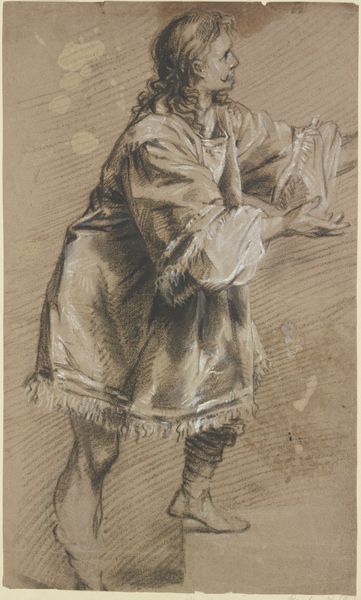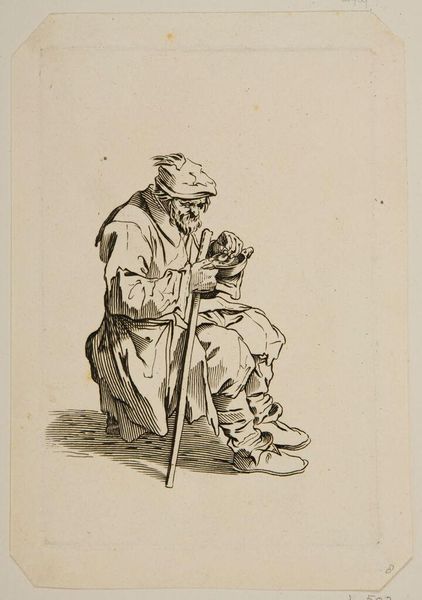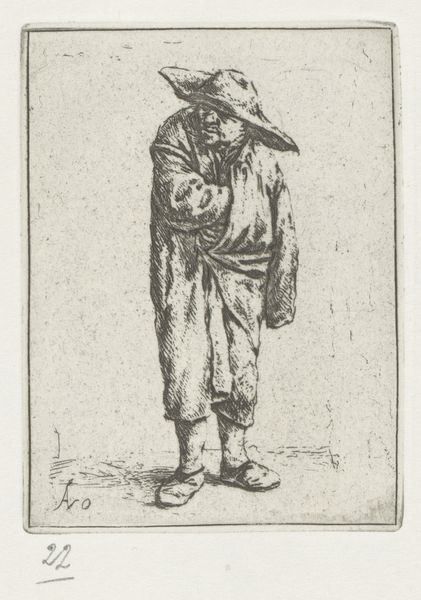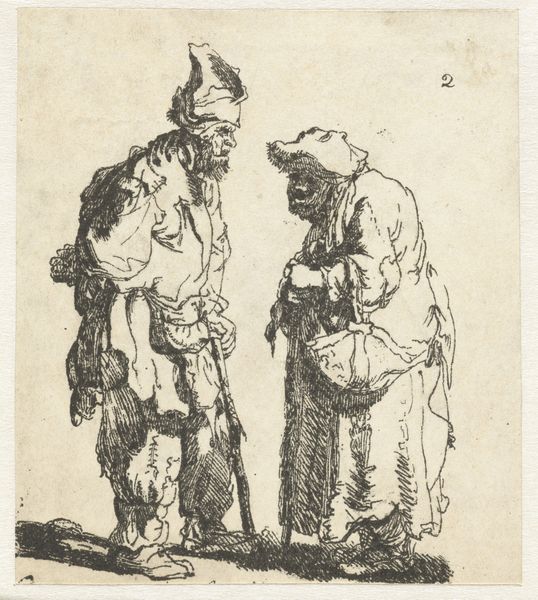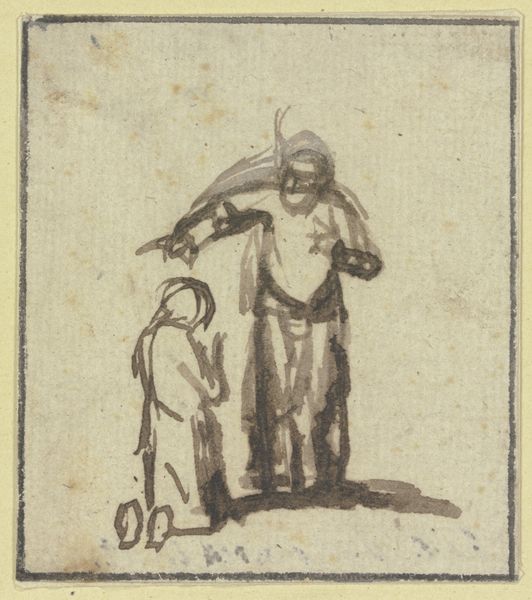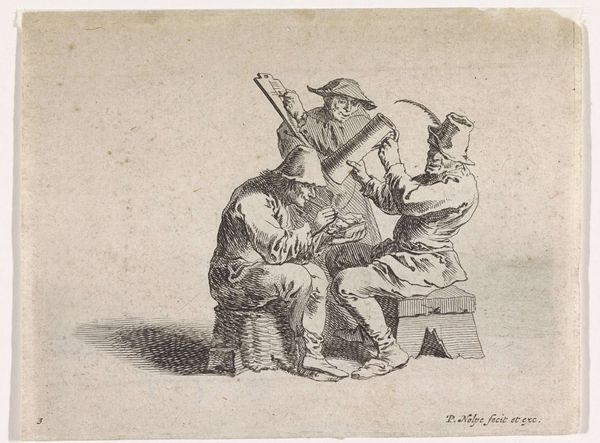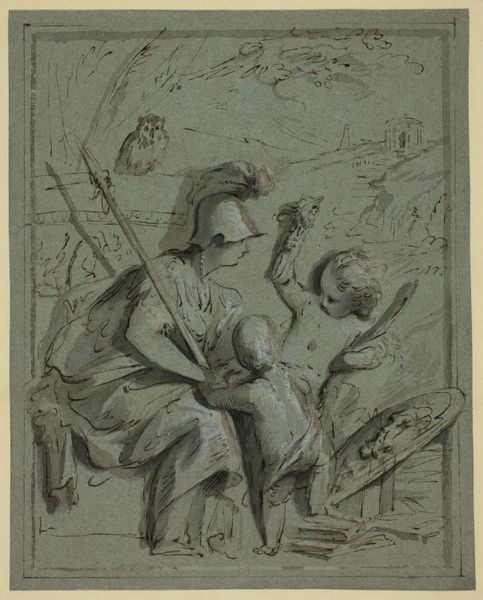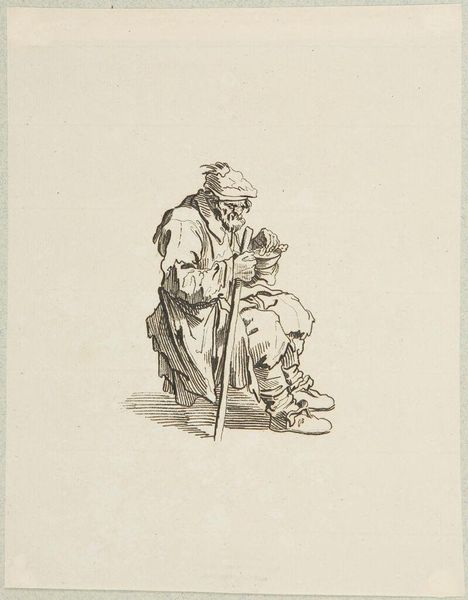
Reverse Copy of Le Gueux Assis et Mangeant (The Beggar Sitting and Eating), from Les Gueux suite appelée aussi Les Mendiants, Les Baroni, ou Les Barons (The Beggars, also called the Barons) 1625 - 1700
0:00
0:00
drawing, print, etching
#
portrait
#
drawing
#
food
#
narrative-art
#
baroque
# print
#
etching
#
figuration
#
genre-painting
#
realism
Dimensions: Sheet: 5 5/16 x 3 7/16 in. (13.5 x 8.8 cm)
Copyright: Public Domain
Curator: This is an etching from somewhere between 1625 and 1700, known as “Reverse Copy of Le Gueux Assis et Mangeant (The Beggar Sitting and Eating), from Les Gueux suite appelée aussi Les Mendiants, Les Baroni, ou Les Barons (The Beggars, also called the Barons).” It's held in the collection of the Metropolitan Museum. Editor: My first impression is one of stark simplicity and somberness; it feels as if a singular, dark moment has been captured with raw, unembellished clarity. The lines are so economic. Curator: Precisely. The composition directs your eye immediately to the figure's downcast face and working hands. Notice the deep, almost frenetic etching around his form contrasted with the bare space, focusing the eye entirely on his form and action. Editor: The bareness also makes me think about the subject matter. Consider the historical context. In the 17th century, images of beggars were often political—commenting on socio-economic disparities, policies regarding poverty, and moral judgments of the ruling class. I'm curious, who was the artist emulating here? Curator: Regrettably, the artist’s name is currently unavailable; the piece is attributed only to anonymous. The quality of line work, though, suggests a knowledge of masters like Callot, who popularized the etching technique in depictions of common life. It shows the potential for printmaking to create very specific allegorical themes in very accessible terms. Editor: That element of accessibility shouldn't be overlooked. Through prints like these, societal critique could reach a broad audience. This image forces us to consider, who is this man? What were the circumstances that led him to this state? Is this realism meant to invoke sympathy or scorn? Curator: Both are plausible depending on the viewer’s positioning. Formally speaking, I’d highlight the realism with which the artist renders texture – the coarse fabric of his clothing, the roughness of his hands. There's even detail in rendering the simple food. The effect transcends pure representation. Editor: Indeed, that raw materiality underscores the reality of this figure’s life. I'm left reflecting on the responsibility we bear as a society toward our most vulnerable members, and the choices we make, even passively, that can perpetuate inequality. Curator: It prompts thoughts on art's engagement with real-world issues through the manipulation of line and composition and creates resonance in what might appear, on its face, to be quite straightforward subject matter.
Comments
No comments
Be the first to comment and join the conversation on the ultimate creative platform.



